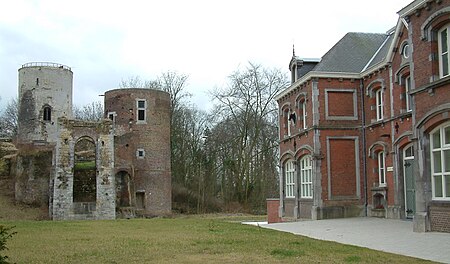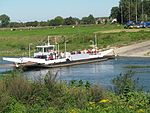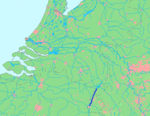Stein, Limburg

Stein (Dutch pronunciation: [ˈstɛin] , Limburgish: [ˈstɛjn]) is a municipality and a town in the southeastern Netherlands. The municipality had a population of 24,875 in 2021 and covers an area of 22.80 km2 (8.80 sq mi) of which 1.72 km2 (0.66 sq mi) is water. The municipality of Stein makes part of the region of South Limburg and lies between the city of Geleen in the east and Beek in the southeast, and lies furthermore west of interchange Kerensheide and the chemical industries of Chemelot. To the west lies the Belgian border, across the Meuse river. In comparison to other cities and villages in the area, Stein is fairly big. It is also the capital city of the municipality with the same name. It has i.a. three Roman Catholic churches, an abandoned mediaeval castle, and a port to the Juliana Canal which used to be the second largest inland port in all of Europe. On 29 October 2009, the shopping mall of Stein suffered a severe fire. As a result of the calamity, the town subsequently lost 40 shops, 2 banks, 1 restaurant and 6 houses. The adjacent, iconic, 11-story apartment building 'De Stevel', remained intact.
Excerpt from the Wikipedia article Stein, Limburg (License: CC BY-SA 3.0, Authors, Images).Stein, Limburg
Scholtis van de Hardtstraat, Stein
Geographical coordinates (GPS) Address Nearby Places Show on map
Geographical coordinates (GPS)
| Latitude | Longitude |
|---|---|
| N 50.966666666667 ° | E 5.7666666666667 ° |
Address
Scholtis van de Hardtstraat 1-GA25
6171 KT Stein
Limburg, Netherlands
Open on Google Maps









